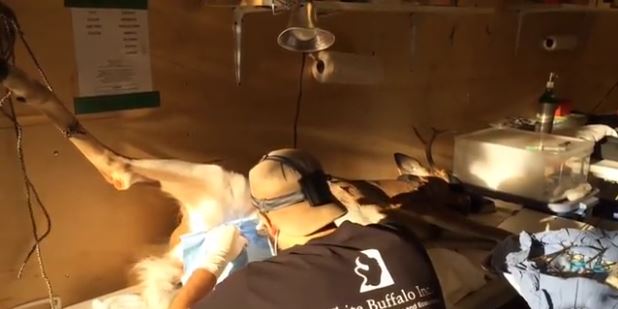As ridiculous as the notion might sound, Staten Island’s deer vasectomy season has closed, for now. As the island’s population of bucks breathe a sigh of temporary relief, researchers and biologists from White Buffalo, the organization performing the surgeries, will assess the data collected before commencing the surgical process again in August.
So far through the vasectomy program, 715 bucks and male fawns have had their ‘manhood’ surgically displaced. In a non-lethal attempt to manage suburban whitetail herds, the Staten Island project is the first of its kind, but will not be the last.
As many other cities and townships wait anxiously for the results from this trial campaign, others have jumped right in. The City of Ann Arbor, Michigan is another city center that has surrendered to the pressure of political science rather than biological science when it comes to their urban deer management strategy.
Rather than focusing on the male reproductive organs, Ann Arbor, conversely, is removing the ovaries of roughly 50 female deer within the city’s center.
In addition to very little scientific evidence, Staten Island’s $2 million vasectomy program ignores many of the principles of sound wildlife and deer management. New York’s Department of Environmental Conservation was also seemingly influenced by the public opposition to utilizing hunting and sharpshooters for effective deer management.
Originally, the department stated that they do not recommend fertility control programs due to their ‘limited effectiveness’ and ‘inability to quickly reduce deer-human conflicts. Instead, the program was justified as a scientific study rather than an actual deer management program – a convenient piece of fine-print many politicians and departments are hiding behind.
While the project is applauded by those against the humane and ethical killing of over-populated ungulates within city centers, it is not without its collateral damage. So far, a reported five deer have been euthanized due to complications with capture attempts.
In what will likely take a number of years to assess, the success of such a plan is still unclear. There is one thing I know for certain; hunting practices have been effective in managing deer and other wildlife populations for quite some time now.
In addition to preserving one of the human race’s most primal pastimes, deer reduction programs through hunting also put thousands of pounds of food on the plate for those in need each and every year.
As we continue to meddle in wildlife management from a non-scientific standpoint, the unfortunate reality of our current actions will likely not surface until it is too late. With each pass of the surgical scalpel, these decisions are slowly whittling away our cherished hunting heritage and sound wildlife management practices.
Feature Image: YouTube




